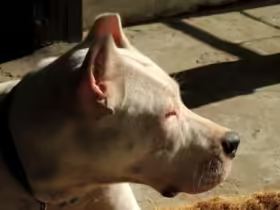Separation anxiety in dogs is a common but distressing issue that affects many pets and their owners. It occurs when a dog becomes overly anxious and stressed when left alone, leading to destructive behaviors, excessive barking, and other signs of distress. Addressing separation anxiety requires patience, understanding, and a strategic approach. This guide provides detailed insights into the causes of separation anxiety, symptoms, and effective solutions to help your dog feel more comfortable when left alone.
Understanding Separation Anxiety
1. What is Separation Anxiety?
Separation anxiety is a behavioral disorder in dogs characterized by excessive fear and anxiety when separated from their owner or primary caregiver. This condition can lead to a range of problematic behaviors, including:
- Destructive Chewing: Chewing on furniture, doors, or other household items.
- Excessive Barking: Persistent barking or whining when alone.
- House Soiling: Urinating or defecating in the house, even if house-trained.
- Pacing and Restlessness: Unusual pacing or restlessness when left alone.
2. Causes of Separation Anxiety
Understanding the causes of separation anxiety can help in addressing the issue more effectively:
- Change in Routine: Moving to a new home, changes in work schedule, or alterations in daily routines can trigger anxiety.
- Traumatic Events: Experiences such as abandonment, prolonged boarding, or the loss of a family member can lead to separation anxiety.
- Lack of Socialization: Dogs that haven’t been properly socialized or trained to be alone may develop anxiety issues.
- Genetic Predisposition: Some dogs may have a genetic predisposition to anxiety-related behaviors.
Identifying Symptoms of Separation Anxiety
Recognizing the signs of separation anxiety is crucial for effective intervention. Common symptoms include:
1. Destructive Behavior
- Chewing and Digging: Dogs may chew furniture, dig at doors, or tear apart household items.
- Damage to Property: Evidence of destructive behavior often includes damage to doors, windows, or other areas where the dog was confined.
2. Excessive Vocalization
- Barking and Whining: Persistent barking or whining when alone, which may continue for extended periods.
3. House Soiling
- Inappropriate Elimination: Urinating or defecating in the house, even if the dog is otherwise house-trained.
4. Pacing and Restlessness
- Unusual Behavior: Continuous pacing, circling, or restlessness when left alone.
5. Escape Attempts
- Desperate Measures: Attempting to escape from the confinement area, which can lead to self-injury or damage to the home.
Strategies to Address Separation Anxiety
1. Gradual Desensitization
Gradual desensitization involves slowly acclimating your dog to being alone:
1.1. Short Departures
- Start Small: Begin by leaving your dog alone for short periods, gradually increasing the duration as your dog becomes more comfortable.
- Positive Reinforcement: Reward your dog with treats and praise for calm behavior during and after your departure.
1.2. Practice Departures
- Simulate Absences: Practice leaving and returning home without any emotional fuss to help your dog understand that departures and arrivals are routine.
2. Creating a Safe and Comfortable Space
Providing a secure and comfortable environment can help alleviate anxiety:
2.1. Safe Space
- Comfortable Crate or Bed: Create a cozy and secure area where your dog feels safe, such as a crate or a designated bed with their favorite toys and bedding.
2.2. Interactive Toys
- Mental Stimulation: Provide interactive toys or puzzle feeders that engage your dog’s mind and distract them from your absence.
3. Training and Behavior Modification
Training and behavior modification can help manage and reduce anxiety:
3.1. Basic Obedience Training
- Commands and Control: Reinforce basic obedience commands such as “sit,” “stay,” and “come” to establish a sense of control and structure.
3.2. Counter-Conditioning
- Positive Associations: Associate your departures with positive experiences, such as providing a special treat or toy that your dog only receives when you leave.
4. Exercise and Enrichment
Regular physical exercise and mental stimulation can help reduce anxiety:
4.1. Daily Exercise
- Physical Activity: Ensure your dog receives adequate exercise through walks, playtime, and other physical activities to help expend excess energy and reduce stress.
4.2. Mental Enrichment
- Training Games: Engage your dog in training games or enrichment activities that challenge their mind and keep them occupied.
5. Establishing a Routine
Consistency and routine can provide a sense of security for your dog:
5.1. Predictable Schedule
- Routine: Maintain a consistent daily routine for feeding, exercise, and playtime to provide structure and predictability.
5.2. Pre-Departure Rituals
- Calm Departures: Develop a pre-departure ritual that is calm and predictable, helping your dog understand that your departure is part of a routine.
6. Professional Help
In some cases, professional assistance may be required:
6.1. Consulting a Veterinarian
- Medical Evaluation: Consult your vet to rule out any underlying medical conditions that may be contributing to the anxiety.
6.2. Behaviorist or Trainer
- Expert Guidance: Seek help from a professional dog behaviorist or trainer who specializes in separation anxiety for personalized strategies and support.











Leave a Reply